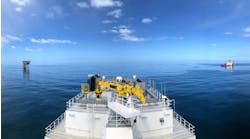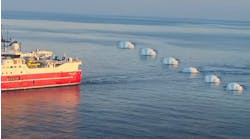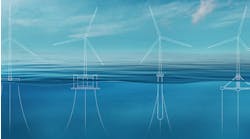Offshore staff
HOUSTON – The status of emerging offshore geoscience technologies was the topic of a panel at the 2014 Offshore Technology Conference in Houston. New streamer technology, permanent reservoir monitoring, seabed geophysics equipment, micro-seismic monitoring, and Petrobras’ experience in Jubarte with permanent monitoring were discussed.
David Monk, director of geophysics forApache, reviewed the place of new streamer technology among the advances. He predicted continuing advancements in bandwidth, an increase to 1 million channels within a decade, and continuing development of novel acquisition geometries.
Rocco Detomo, an independent consultant, talked about the rise in life-of-field seismic systems and the inclusion of geodesic measurements with the typical seismic data. Looking forward, Detomo expects improved instrumentation, much denser receiver spacing, more channels, and ruggedization of fiber optics, along with the establishment of standards for their use.
Shuki Ronen, of Seabed Solutions, expects more combined use of streamers and seabed nodes going forward, particularly where area obstructions preclude use of streamers. As for the use of seabed monitors, Ronen expects to see ROV handling of the equipment for placement and recovery to go along with more sensors and longer-life batteries for power. Better broadband sources, with more repeatability and faster shooting to improve the economics of seabed receivers, will lead to a new chapter in geophysics, he said.
On the use of microseismic technology offshore,Peter Duncan, of MicroSeismic Inc., talked about the use of passive measurement technology as being applicable to both frac and production monitoring, in addition to being a part of the smart oil field. He also pointed out that such passive monitoring could benefit the public transparency of technological applications.
Petrobras’ Paulo Johann showed how the company is applying permanent reservoir monitoring (4D/4C) at record water depths of as much as 1,350 m (4,428 ft) of water at Jubarte in the Campos basin. One benefit in particular is in the ability of seabed monitors to work in the presence of complex infrastructure. The Jubarte area counts 60 fields with a total of 567 wells and 51 platforms. Johann also pointed out that Petrobras had taken as many as 3.8 million sensor traces per square kilometer with four-component sensors at every 50 m (164 ft) along the cables.
5/6/14


